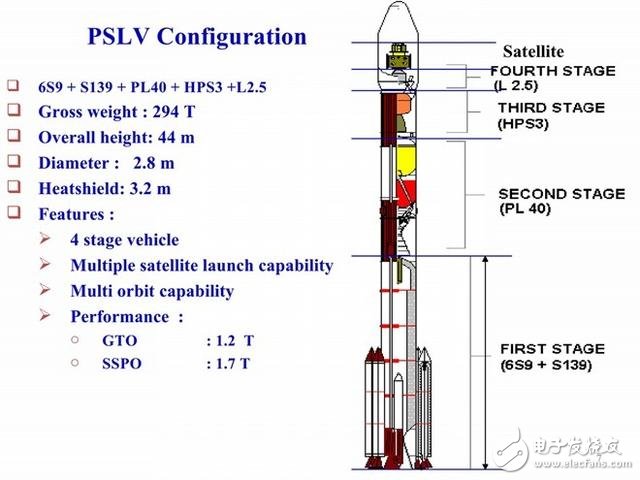According to foreign media reports, P. Kunhi Krishnan, director of the Sadish Davan Space Center in India, said that for each of them, the success of each mission is very important, and expressed confidence that more progress will be made in 2017. He said that India's first launch in 2017 will be the PSLV-C37 rocket carrying 103 satellites on January 27, including the Cartosat-2D. This will create the world record for the largest number of new one-time launch satellites.
The other satellites carried by this launch are commercial satellites of other countries. According to the director, the Indian Space Research Organization (ISRO) plans to launch four launches in the first half of 2017, including the PSLV-C37 rocket with 103 satellites, and the GSLV-Mk-111 rocket with a 3.2-ton GSAT-19E satellite in March. The remaining two plans are the PSLV-C38 and GSLV Mk-1 at the end of March. Krishnan said that all projects will be in full swing in all ISRO divisions.

Data Map: Indian Polar Orbiting Satellite Launch Vehicle (PSLV)
India's PSLV launch vehicle:
The PSLV launch vehicle (English name: Polar Satellite Launch Vehicle, Chinese name: Polar Satellite Launch Vehicle) is a self-developed vehicle for launching polar orbits and sun-synchronous orbit satellites.

The PSLV is a four-stage rocket with a height of 44 meters, a low-earth orbit carrying capacity of 3.25 tons, and a geosynchronous transfer orbit of 1.42 tons. The Rockets have launched more than 40 satellites in 19 countries. The launch of the PSLV rocket has been successfully launched 33 times as of March 10, 2016.
One arrow multi-star technology is not easy
"One arrow and many stars" can make full use of the carrying capacity of the launch vehicle, and economically and conveniently send satellites into Earth orbit, providing multiple choice modes for satellite launch services, which is especially important for the development of microsatellites. The use of a launch vehicle to launch multiple satellites can be divided into two categories according to the mode of entry: one is to send a group of satellites into the same orbit. When the rocket arrives at the orbit, all the satellites are like the flowers of the sky. The same was released. The other type is to send multiple satellites into the orbit of different parameters, usually requiring a special distributor.
According to reports, there are not many countries and organizations that have mastered the "one arrow and many stars" technology, only the United States, Russia, the European Space Agency, China and India. At present, the competition in related fields in the world is fierce. On November 19, 2013, the United States created a world record of “29 starsâ€. In just two days, Russia used a Dnepr carrier rocket to carry 32 microsatellites. Brought into the track, refreshing the US record. At present, the highest record of “one arrow and many stars†is still maintained by Russia – a “Dnepr†launch vehicle launched in June 2014 achieved “one arrow and 37 starsâ€.
2.1 Ch Speakers,5.1 Ch Speakers,5.1 Ch Soundbar,2.1 Ch Soundbar
Newmax Electronics Co.,LTD , https://www.fspeaker.com